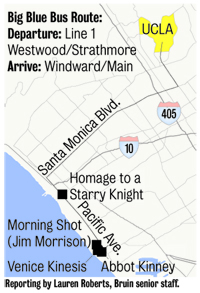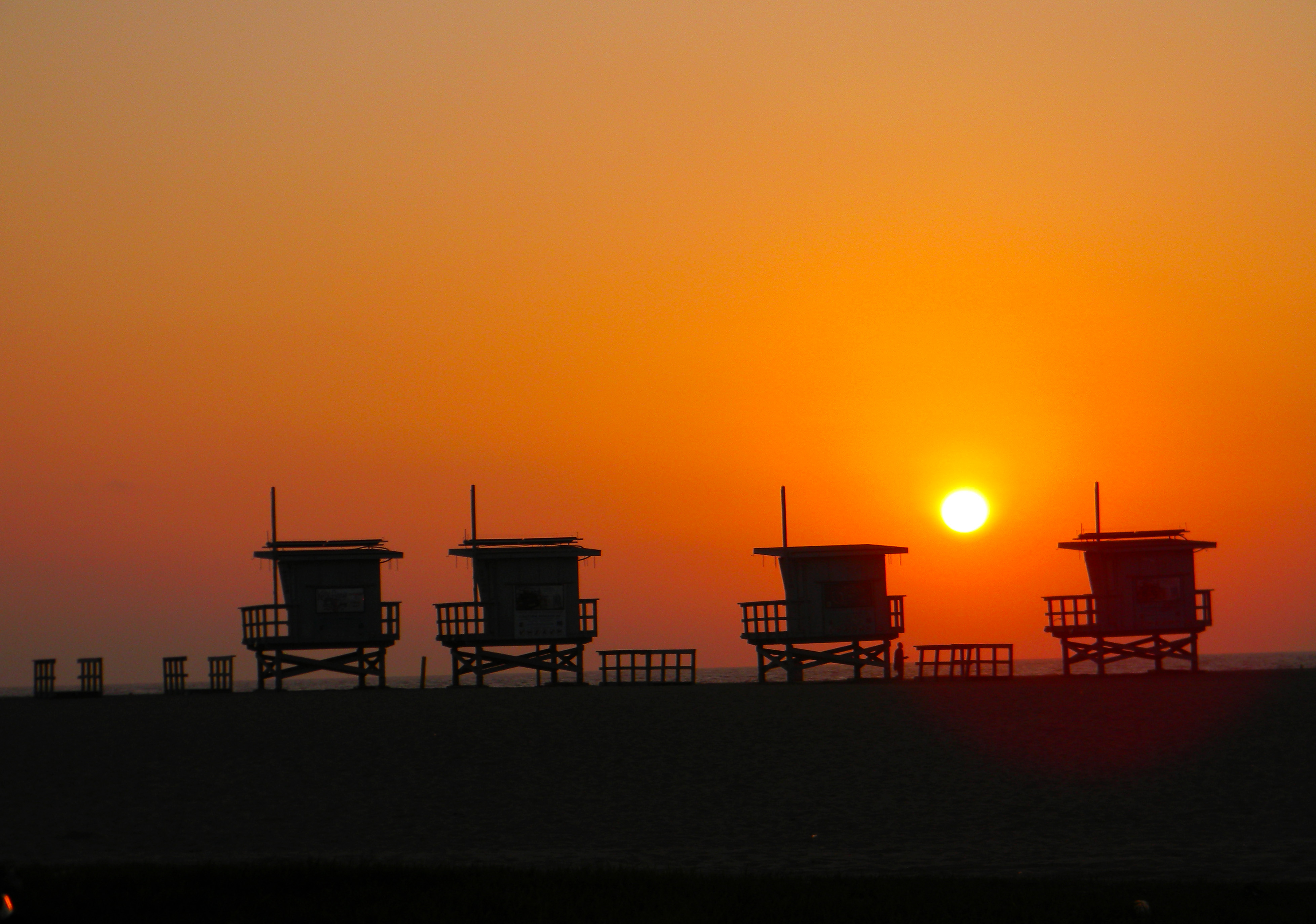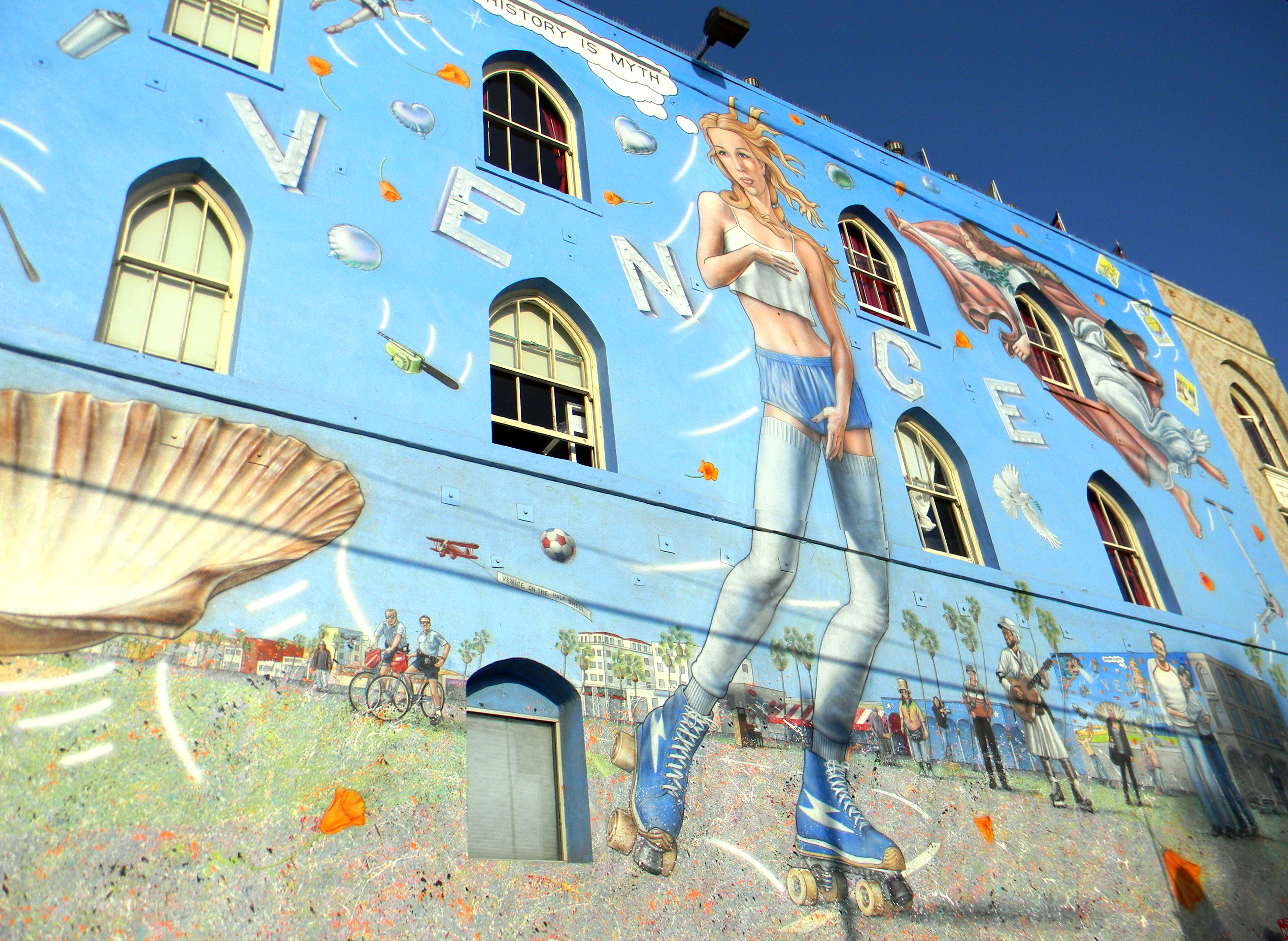


I’m convinced that there’s nowhere quite like Venice. It’s a cultural mecca for all things quirky and the people-watching capital of Los Angeles ““ if not the state.
Its pseudo hippie culture is capable of producing any form of entertainment, from rainbow-wigged juggling performers, sidewalk artists and acrobatic break dancers to serenading street dwellers.
Granted, I’d been here before. But this time I came back with the semblance of a game plan, as it’s inevitable that the easily distracted would get lost on the boardwalk where there is no shortage of colorfully outrageous sights to choose from.
As a classic rock fan and an even bigger art nerd, I set out for some Venice highlights ““ its local Doors history and its signature murals by artist Rip Cronk. The latter definitely made up for the former.
I’d always known that The Doors formed in Venice after frontman Jim Morrison and keyboardist Ray Manzarek graduated from UCLA in 1965. So like a true fangirl, I scoped out a few notable Venice addresses from Manzarek and Robby Krieger’s official website and readied my Google maps print outs.
While the effort was far more glamorous in theory, I paid my homage to the Westminster Avenue apartment where Morrison spent his first summer after college living in Venice and writing songs. Turns out, no matter how rock “˜n’ roll your residents’ history is, an apartment building is, in fact, always an apartment building. Though a Doors fan seems to operate the four-story building now called “The Morrison,” it’s a plain structure when compared to its dungeon-themed neighbor, which is complete with clawed wall fixtures, flame torches, rooftop knights and gargoyles. Only in Venice.
My second stop was Brooks Avenue ““ site for a 1969 Doors publicity photo shoot with Henry Diltz promoting the “Morrison Hotel” album. Of the shots, the Venice boardwalk is all that remains the same. The Coca-Cola mural used in the shoot is weathered paint chips at best, the garage of another site replaced. The best way to remember The Doors is to simply listen to the band’s music.
I had better luck when it came to finding the masterpieces of muralist Rip Cronk.
The artist’s large-scale works are local icons and color much of the brick and stucco sides of beachside Venice buildings. Cronk’s work is so prevalent in the community that online catalogues keep records of each of his projects.
I sought out four of the artist’s larger murals ““ “Morning Shot,” a two-story portrait of a shirtless Jim Morrison; “Venice Kinesis,” a refurbished and retitled 1989 mural originally called “Venice Reconstituted” which Cronk updated just last year; “Homage to a Starry Knight,” a 1990 recreation of Vincent van Gogh’s post-impressionist masterpiece; and “Abbot Kinney,” a mural portrait memorializing Venice’s 1905 founding father.
There’s a playful spirit to Cronk’s work. Bold color contrasts and attitude weave their way into his chosen subjects.
“Venice Kinesis” is perhaps the most impressive of all ““ a humorous three-story reinterpretation of Sandro Botticelli’s “Birth of Venus” bathing the side of the boardwalk’s Danny’s Deli in an eye-catching electric blue.
However, Cronk’s Venus is a little less Venetian Italian Renaissance and more patron Southern California girl ““ donning roller skates, shorts and tank top and the single thought cloud: “History is a myth.”
Cronk cleverly trades Botticelli’s floating roses for windblown orange California poppies, sunglasses and skateboards, while the Italian forest becomes the Venice boardwalk ““ complete with a mimetic depiction of the mural within the mural.
Cronk captures Venice’s own energetic spirit, advising that perhaps you can’t come to Venice with a plan. Exploring the boardwalk requires one to “take it as it comes,” as The Doors might say.
Looking to explore? Email Roberts at lroberts@media.ucla.edu if you think you know L.A. best.
“Artscapes” runs every Wednesday.
